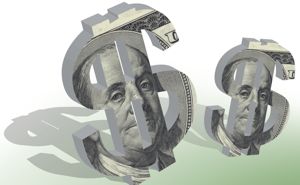 Distracted driving crashes cost the United States as much as $175 billion a year, according to a federal study.
Distracted driving crashes cost the United States as much as $175 billion a year, according to a federal study.
The National Highway Traffic Safety Administration says all highway crashes add up to $871 billion — $277 billion a year in economic costs and $594 billion in “societal harm.”
Distracted driving crashes accounted for $46 billion (17 percent) of the total economic losses. The societal harm was put at $129 billion (15 percent) of the societal harm.
Distraction was among the five key factors listed in the report “The Economic and Societal Impact of Motor Vehicle Crashes, 2010,” released May 28, 2014.
The economic cost of distracted driving crashes came to an average of $148 for every person in the nation, the NHTSA study said.
DOT chief Anthony Foxx said: “While the economic and societal costs of crashes are staggering, today’s report clearly demonstrates that investments in safety are worth every penny used to reduce the frequency and severity of these tragic events.”
The total costs of vehicle crashes came to about 2 percent of the GDP, the NHTSA number crunchers said:
Factors contributing to the price tag include productivity losses, property damage, medical and rehabilitation costs, congestion costs, legal and court costs, emergency services, insurance administration costs, and the costs to employers, among others.
Distraction — “including interior distraction, exterior distraction, and inattention” — was linked to 17.7 percent of all cases where the “critical pre-crash event” was attributed to drivers. In 2010, 3,267 people reportedly were killed in crashes involving distracted drivers.
Distracted driving was identified as a factor in about 10 percent of all fatalities and 18 percent of all crashes overall, researchers said. Distraction numbers were “almost certainly conservative” because of issues with incomplete police reporting and a reluctance of drivers to self-report the behavior, the study said.
Other factors broken out in the study were drunk driving, speeding, pedestrians/bicyclists and seat belts.
- Read the full report “The Economic and Societal Impact of Motor Vehicle Crashes, 2010” (PDF)


And, now, boys and girls, you understand why the States are not serious about safety. There’s too much money to be made. That $175 billion represents money changing hands. And when that happens States get a cut in the form of sales taxes and income taxes. It’s as simple as all that. Whenever things don’t make sense always follow the money.
So there’s the reason why only hand-held phones are banned while driving and not the conversation, which is the actual distraction. That distraction is actually encouraged ay allowing drivers to use hands-free.
As the National Safety Council says: “Hands free is not risk free.” But the States don’t care about safety. They care about enriching their treasuries.
And now you also understand why some States make it a secondary offense rather than a primary offense. It’s all smoke and mirrors to fool the public into thinking they care about safety.